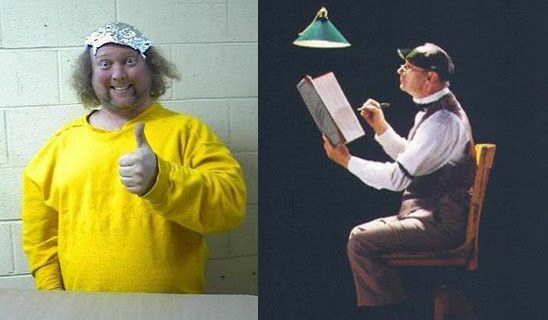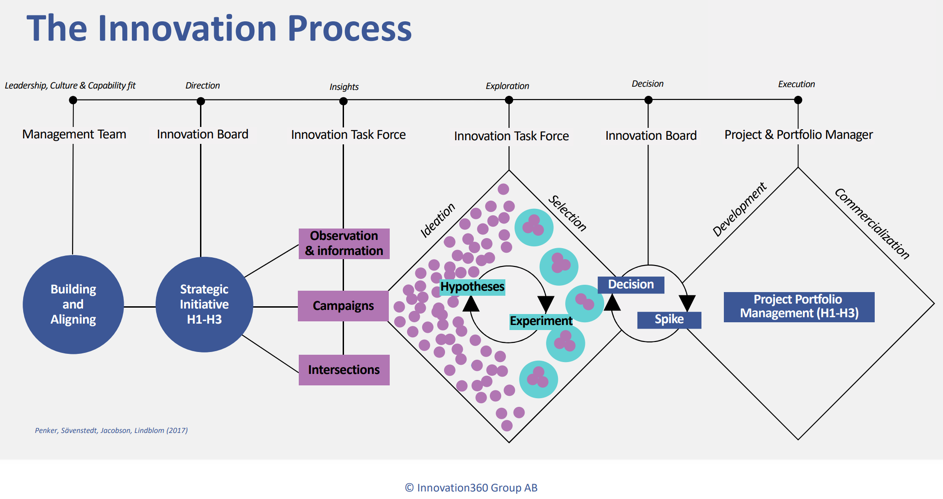
How to create continuous innovation
When I talk to customers about innovation and about creating continuous innovation, it is often concluded that they lack a strategic and systematic approach to innovation. They lack an innovation process or an innovation system. Companies must realize that the innovation process is one of the basic processes in today’s business. It is not often thought that it is enough to hire the figure to the left in the picture below, but it is actually needed a profile like the one on the right in the picture for inventions to become innovation ie. commercialized and create value.
For successful innovation, more profiles are needed in the management team mentioned in the picture below, but I save the different profiles to another post. In order for it to be repeatedly innovation, an innovation system is actually needed, but it does not have to be so remarkable. In a discussion the other day, a customer said ”and what is that innovation system we are going to develop?” And with development he meant programming. I then realized that I probably probably went a little too fast. That’s why I write this post.

I’m going to focus here on the five steps in the middle; direction, insights, ideation, selection and decision. I assume that if you want to drive their innovation strategically, you also have a strategy for their company and, as I wrote earlier, I do not intend to go here on how to evaluate and build their management team for innovation, nor does the execution phase now touch me. That saves me another time.
When you know your business strategy, you need to decide in which areas you should drive innovation. H1-H3 shown in the picture refers to McKinsey’s Three Horizions
which in principle means that you have to divide their innovation initiatives into those to be done now (H1), those who will deliver value of 12-36 months (H2) and those who will deliver value + 36 months (H3). I like this model, but then @Steve Blank presented a new view of the one I mentioned in a recent post. Steve Blank’s article partly explains my motivation for business model innovation.
When one has defined in which areas one wants to drive innovation and on what horizon the various initiatives are to be run, it is time to retrieve information and formulate innovation campaigns. These leads, in turn, to a lot of ideas that are clumped together, evaluated, experimented on to create a decision basis for innovation board that decides whether the idea is good enough to develop and commercialize.
So what do you have to do to have an innovation system then?
1. Be clear with the strategy of your company.
2. Decide in which areas you want / need to innovate.
3. Get information and inspiration.
4. Create ideas using as many people as possible in the company and perhaps with open innovation even outside the company.
5. Test your ideas as easily and cheaply as possible.
6. Decide on clear predetermined bases if this is an idea that you should develop and commercialize.